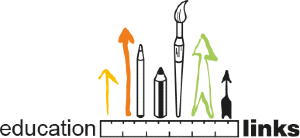Digital Safeguarding
The purpose of safeguarding at Education links is to keep children safe from the potential risk of harm. Digital safeguarding is how we help everyone at Education Links stay safe online.
If you have a safeguarding concern offline or online, report it to Education Link’s designated safeguarding lead (DSL)
What do we mean by digital safeguarding?
Digital safeguarding means protecting everyone at Education Links from harm in an online environment like:
- Cyberstalking – Repeatedly using electronic communications to harass or frighten someone. For example, by sending threatening messages.
- Discrimination and abuse on the grounds of protected characteristics – It can be an offence to stir up hatred – 'inciting hatred' - on the grounds of any of the protected characteristics.
- Disinformation - Deliberate intent to spread wrong information.
- Hacking – Accessing or using computer systems or networks without authorisation, often by exploiting weaknesses in security.
- Harmful online challenges – Online challenges sometimes show people doing dangerous things. People share these posts on social media, encouraging others to do the same.
- Hoaxes – A lie designed to seem truthful.
- Impersonation - Where someone pretends to be someone else online. This is often by taking photos from social media to build a fake profile. This is sometimes known as ‘catfishing’.
- Misinformation - Where someone shares information, they think is correct, but it isn’t.
- Online bullying - Offensive, intimidating, malicious, insulting behaviour and abuse of power online. This can humiliate or denigrate people.
- Online harassment - Unwanted contact online intended to violate someone’s dignity. It could be hostile, degrading, humiliating or offensive.
- Promotion of self-harm, suicide and eating disorders – Content encouraging these harmful behaviours on social media.
- Radicalisation - Radicalisation aims to inspire new recruits, embed extreme views and persuade vulnerable people to support a cause. This may be through a direct relationship, or through social media.
- Sexual exploitation and grooming online - Developing a relationship with a child with the intention of abusing them. Offenders use emotional and psychological tricks to build relationships. The abuse can take place online or offline.
- Sharing of illegal and inappropriate imagery - ‘Illegal’ means child sexual abuse imagery and imagery that incites violence, hate or terrorism. ‘Inappropriate’ could mean sharing pornography, or violent or hateful content.
- Oversharing personal information - This includes information that makes someone identifiable, like their names or phone number. It may also include identifying details based on someone’s protected characteristics.
Firewall, Filtering and Monitoring at Education Links
Education links network hardware and software firewall is used to further support digital safeguarding by preventing unauthorised access. The firewall does so by filtering the information that comes in from the internet. With the information the firewall has available, it blocks unauthorised access and allows authorised access. So basically, the firewall is just like a literal firewall; it blocks and protects our private network from unauthorised access, also known as the public internet.
To further support digital safeguarding at Education Links we use the award-winning Classroom.Cloud filtering and monitoring platform. Classroom.cloud’s online safety tools helps keep our learners’ online environment safe at all times, by monitoring concerning activity, identifying students at risk and spotting online safety trends.
Please click on the links below for other relevant information:
- National Society for the Prevention of Cruelty to Children (NSPCC)
- South West Grid for Learning (SWGfL)
- Professionals Online Safety Helpline (POSH)
- Teaching Online Safety in schools
